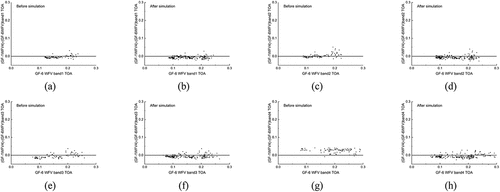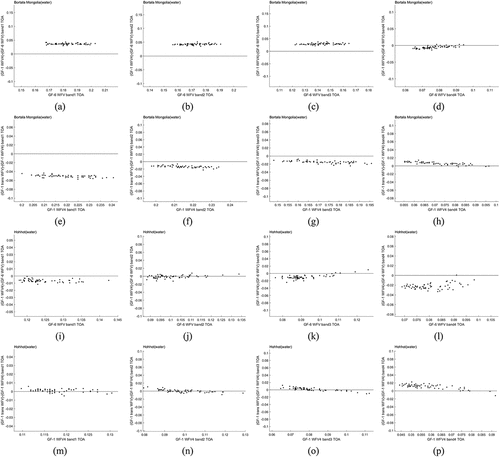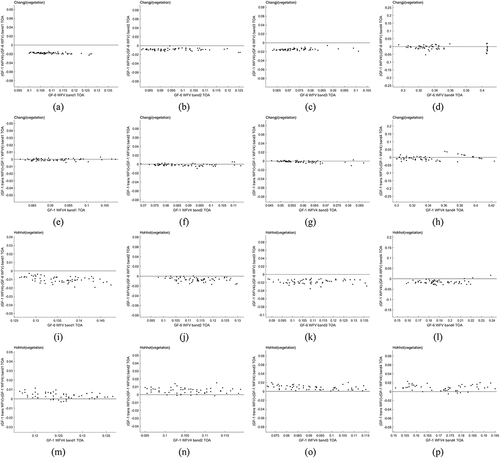Figures & data
Table 1. GF-1 WFV4 and GF-6 WFV satellite orbit parameters.
Table 2. GF-1 WFV4 and GF-6 WFV satellite sensor parameters.
Figure 1. GF-1 WFV4 (a–c) vs. GF-6 WFV (e–f) image pairs (RGB: 432). (a)–(c) show the GF-1 WFV4 data for the three regions, (d)–(f) show the GF-6 WFV data for the three regions.

Table 3. The location and size of the image pairs in the study area.
Table 4. The parameters of the synchronizing image pairs.
Table 5. The calibration coefficients for GF-1 WFV4 and GF-6 WFV.
Table 6. The solar irradiance at the TOA of GF-1 WFV4 and GF-6 WFV.
Figure 2. The plot of the corresponding band sample area against the y=x line in the sample area by the TOA mean method.
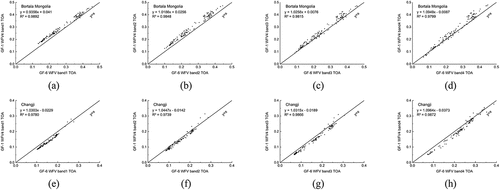
Figure 3. The plot of the corresponding band sample area against the y=0 line in the sample area by the TOA mean method.

Figure 4. Scatter plot of corresponding bands based on ROI spectral mean comparison method for two images.

Table 7. The statistical characteristics related to image pairs in the sample area by the TOA mean comparison method.
Figure 5. Scatter plot of the corresponding band in the sample area by the TOA mean comparison method in Hohhot.
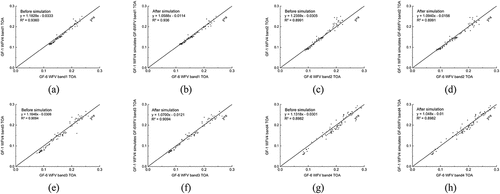
Table 8. The statistical characteristics before and after the simulation of apparent reflectivity in Hohhot.
Figure 7. Typical features extraction diagram. (a)–(g) Binarization images of water bodies in Bortala Mongolia, where (a) is the NDWI validation data; (b) is the water body binarization map of the GF-6 WFV image with a threshold of 0.14; (c) is the water body binarization map of the GF-1 WFV4 image with a threshold of 0.14; (d) is the water body binarization map of the GF-1 trans WFV image with a threshold of 0.14; (e) is the water body binarization map of the GF-6 WFV image with a threshold of 0.20. (f) is the water body binarization map of the GF-1 WFV4 image with a threshold of 0.20, (g) is the water body binarization map of the GF-1 trans WFV image with a threshold of 0.20.(h)–(n) the vegetation binarization images of the Changji area, where (h) is the NDVI validation data; (i) is the vegetation binarization map of the GF-6 WFV image with a threshold of 0.42; (j) is the vegetation binarization map of the GF-1 WFV4 image with a threshold of 0.42; (k) is the vegetation binarization map of the GF-1 trans WFV image with a threshold of 0.42; (l) is the vegetation binarization maps of the GF-6 WFV image with a threshold of 0.46, (m) is the vegetation binarization maps of the GF-1 WFV4 image with a threshold of 0.46, (n) is the vegetation binarization maps of the GF-1 trans WFV image with a threshold of 0.46.
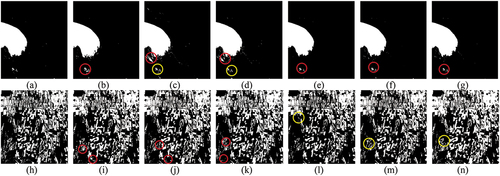
Table 9. Typical feature extraction thresholds and Kappa coefficient statistics.
Data availability statement
The data that support the findings of this study are available from the corresponding author, upon reasonable request.

